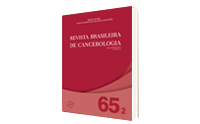Medication and Pain Control: Experience of a Brazilian Palliative Care Referral Center
DOI:
https://doi.org/10.32635/2176-9745.RBC.2019v65n2.365Keywords:
Drug Therapy, Palliative Care, Pain Management, Cancer PainAbstract
Introduction: Pain is one of the most prevalent symptoms in cancer patients, especially in the last year of life, and its inadequate control is frequent. Objective: Outline the profile of drugs used for pain control in an exclusive oncology palliative care hospital unit. Method: A crosssectional study with longitudinal follow-up of all hospitalized patients between September and November 2016. Numeric Rating Scale (NRS), functionality and drugs with analgesic potential used were collected through medical chart review. Results: The 399 hospitalized patients presented 461 hospitalization episodes, of which 429 (93%) were patients with pain symptom (controlled or not). The mean age was 62 years, with an average of 8 days of hospitalization motivated by pain in 18% of the cases and in 35%, the pain symptom was not controlled. Of these, NRS was quantified as zero after 2 days in average. According to the Analgesic Ladder, 29% were in the 1st step, 11% in the second and 82% in the third. The use of common analgesic and of adjuvant was verified in more than 80% of the episodes. The mean equivalent dose of oral morphine was 117 mg/day. Discussion: Pain control observed was higher and earlier when compared to other similar works. The mean opioid dose (analgesic equipotent) was analogous to the observed in other studies. However, the use of strong opioids and adjuvants was more frequent than what was noticed in other services. This difference may justify the better pain control. Conclusion: The action of skilled team grants better symptom control.









